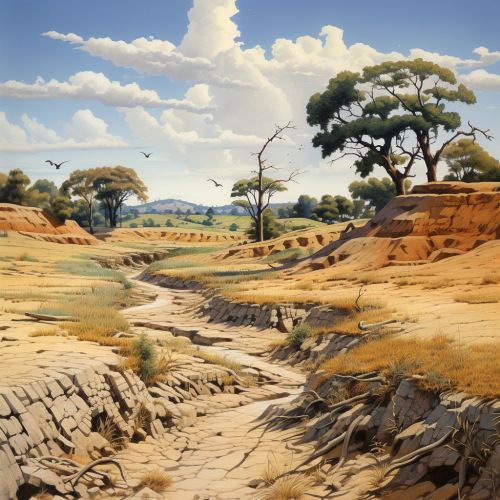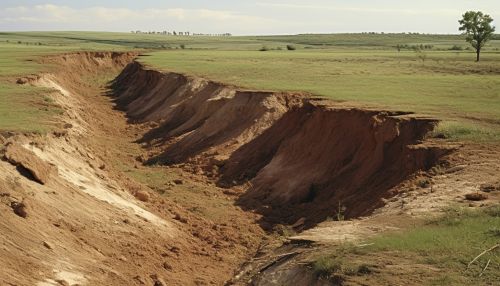The Dynamics of Soil Erosion and Land Degradation
Introduction
Soil erosion and land degradation are significant environmental issues that have profound impacts on the sustainability of ecosystems and human societies. Soil erosion refers to the removal of the top layer of soil, primarily due to the actions of water, wind, and tillage of farmland. Land degradation, on the other hand, is a broader term that encompasses soil erosion, along with other processes that result in the reduction of the productive capacity of land.


Soil Erosion
Causes
Soil erosion is primarily caused by natural processes such as water and wind. The intensity and direction of wind, the amount and type of rainfall, and the type of soil are all factors that influence the rate of soil erosion. Human activities, such as deforestation, overgrazing, and improper agricultural practices, can also contribute to soil erosion.
Effects
Soil erosion can have devastating effects on the environment and human societies. It can lead to a reduction in soil fertility, which can in turn affect agricultural productivity. Soil erosion can also lead to water pollution, as eroded soil particles can carry pollutants into water bodies. In severe cases, soil erosion can lead to desertification, a process where fertile land becomes desert.
Prevention and Control
There are several strategies for preventing and controlling soil erosion. These include the use of cover crops, terracing, contour plowing, and the construction of windbreaks. The choice of strategy depends on the specific conditions of the area, including the type of soil, the climate, and the type of land use.
Land Degradation
Causes
Land degradation is caused by a variety of factors, both natural and human-induced. Natural factors include climatic conditions such as rainfall and temperature, and geological factors such as soil type and topography. Human-induced factors include deforestation, overgrazing, urbanization, and improper agricultural practices.
Effects
Land degradation can have severe impacts on the environment and human societies. It can lead to a loss of biodiversity, as species lose their habitats. It can also affect the availability of water, as degraded land is less able to store and filter water. Moreover, land degradation can lead to social and economic problems, as it can reduce agricultural productivity and force people to migrate.
Prevention and Control
Preventing and controlling land degradation requires a combination of strategies. These include sustainable land management practices, such as agroforestry, conservation agriculture, and sustainable forest management. It also involves policy measures, such as land use planning and the enforcement of environmental regulations.
Conclusion
Soil erosion and land degradation are serious environmental issues that require urgent attention. By understanding the causes and effects of these processes, and by implementing effective prevention and control strategies, it is possible to mitigate their impacts and ensure the sustainability of our ecosystems and societies.
